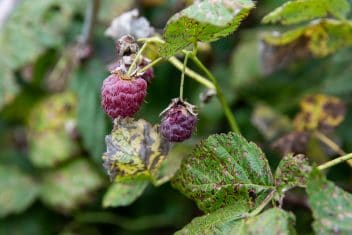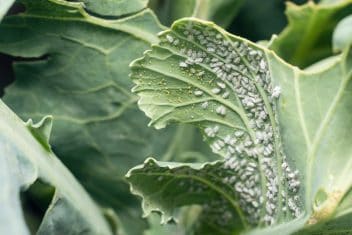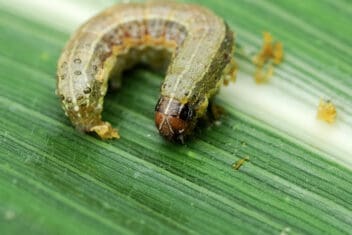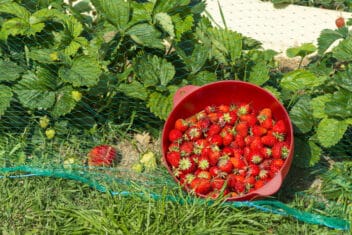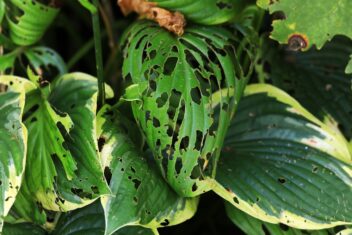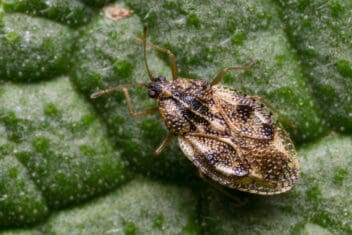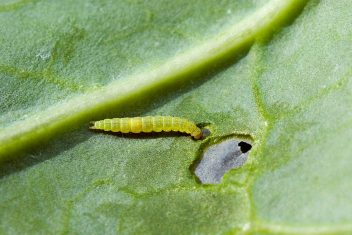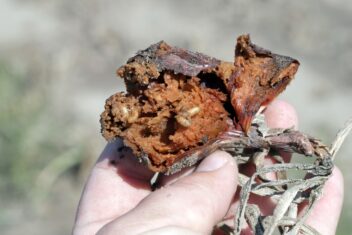Last year, my carrot crop was a HUGE success. I had never pulled so many carrots from my garden before, each prettier than the last! I was lucky to have dealt with a few pests, which is fortunate because the carrot rust fly is a terrible foe.
The annoying little pests can ruin a carefully tended crop and have several generations each year.
If you’re struggling with carrot rust fly and want to find out how to combat their presence in your carrot patch, keep reading to find out more about this pesky garden bug.
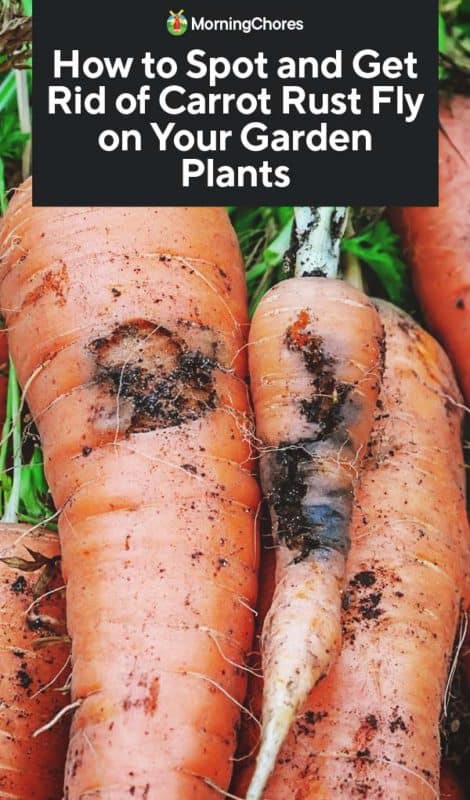
What are Carrot Rust Flies?
Carrot rust flies (Psila rosae) are small fly-like insects that are attracted to carrots and carrot relatives. The flies are brownish-reddish and no longer than 8mm long.
The larval stage of the insect is that which causes the most damage. Once hatched, the worms burrow into the taproot of the plant.
This insect lies dormant within leftover carrots (or other taproots) throughout the winter and emerges in the spring and early summer as fully formed adult flies. They lay their eggs on top of the soil. The eggs then hatch to reveal larvae that are active throughout the summer season.
The carrot rust fly reaches maturity within about 30 days, and until they reach adulthood, the larvae burrow into taproots to gain sustenance.
Carrot rust flies reproduce multiple times during the gardening season, so if the problem isn’t dealt with, a new set of hungry larvae may appear later in the season.
Although you may think this fly gets its name because it spreads rust – a common fungal disease seen in plants – you’d be incorrect! Carrot rust flies are so named because of the rusty colored patches left behind by munching larvae.
In addition to targeting carrots, this fly may also infest:
The Rust Fly Lifecycle
Rather than the fly itself, it’s the larvae that cause significant damage to crops. The small flies lay tiny eggs, and the larvae burrow into the root portion of the plant.
The larvae cause visual damage but also increase the risk of disease in your plants. Most pest infestations transfer bacterial and fungal infections, which is why it’s essential to deal with the problem immediately. Even if the physical damage is minimal, the threat of disease carries with it a high risk of crop devastation.
Damage in carrots grown for overwintering is particularly devastating because larvae may continue to feed while the roots are in storage.
The larger the larvae, the more extensive the damage.
Signs of Carrot Rust Fly Activity
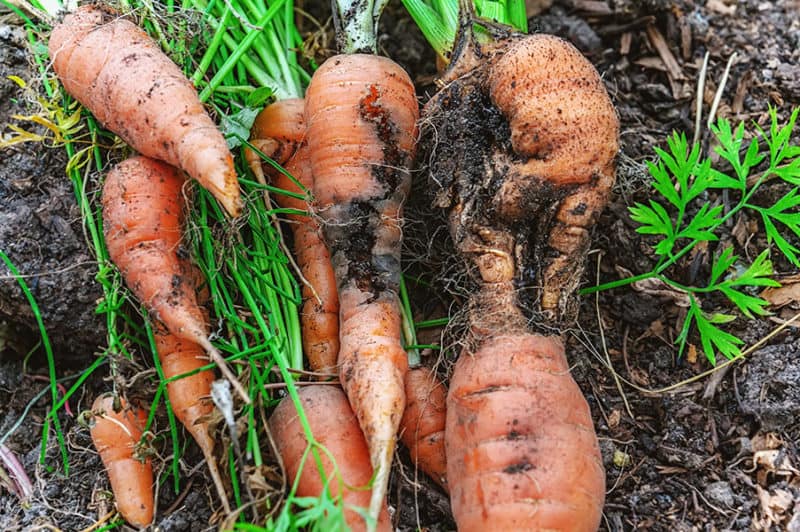
Here’s the rub. It’s challenging to spot the real damage caused by carrot rust flies until it’s too late because the majority of the damage inflicted occurs underground. Carrots infested with this insect are often misshapen and may display signs of burrowing (the larvae creep into the plant roots).
Some plants infested with carrot rust fly may die. This is usually the case when the plants are young and tender.
Other affected plants may seem totally fine until you pluck them from the earth.
Often, the first sign of an issue is tissue damage at the crown of the root. Larvae may sometimes migrate to the leaf stalk portion of the plant.
If you suspect a carrot rust fly infestation, try placing sticky traps around your carrot (or other affected vegetable) patch. If you notice that several flies are stuck in the trap after a week or so, you likely have a problem on your hands.
Take note that sticky traps aren’t exclusively for trapping carrot rust flies. You may find other insects caught in your traps, so proper identification is important when using traps to identify an infestation.
How to Deal with an Infestation
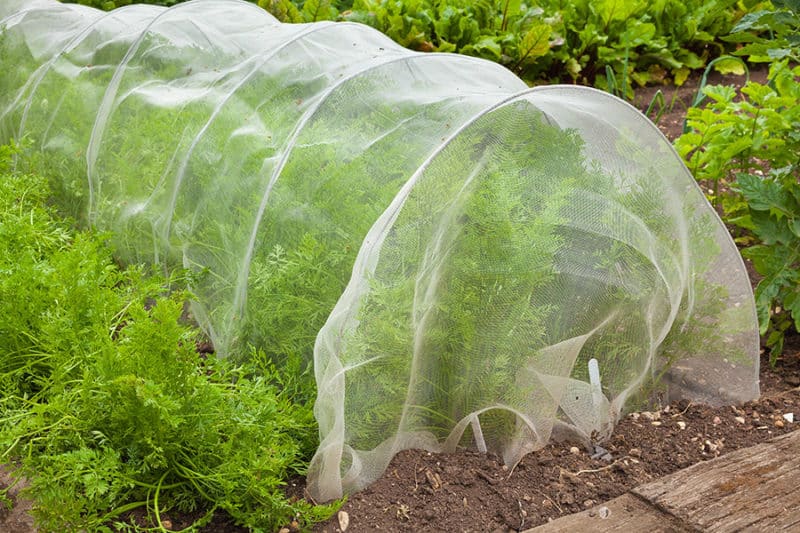
Row covers are a reliable organic solution for handling a carrot rust fly problem. The key is timing – place the row covers on new beds to prevent newly mature adults from finding a place to lay their eggs.
There are also insecticides available to control rust fly populations, though I’m not a fan of concentrated chemical solutions.
The best way to address a carrot rust fly problem is with preventative solutions like crop rotation, interplanting, and proper timing.
How to Prevent Carrot Rust Fly
To prevent carrot rust flies from becoming a problem in your garden, consider incorporating crop rotation as part of your yearly garden planning. Never plant edibles in the carrot family in the same place year after year. Always pick a new location.
Moving crops to a new site not only discourages a number of pests and diseases from getting a leg up, but it’s also a handy tool for eliminating carrot rust fly because the bugs don’t fly far.
If you have a large homestead, it may be possible to plant a new carrot patch far enough from a previously affected area to reduce the pest problem in the following year.
The use of cover crops is another strategy suitable for preventing carrot rust fly. Cover crops like crimson clover help improve soil quality. They also act as a mulch and encourage the arrival of beneficial and predatory insects.
Proper timing is also vital if trying to reduce damage. Delaying planting so that newly emerging egg-laying adults don’t have anywhere to lay their eggs will prevent future generations from hatching and interfering with your crops.
How can you tell when the flies are around and searching for a place to lay their eggs? Use sticky traps to monitor carrot rust fly activity. Once you’ve spotted adult flies in your carefully placed traps, it’s time to pop on the row covers.
Planting strong-smelling crops like alliums is another way to deter carrot rust flies from taking up residence in your carrot, dill, or celery patch.
When selecting seeds for sowing this upcoming gardening season, be sure to choose pest-resistant varieties.
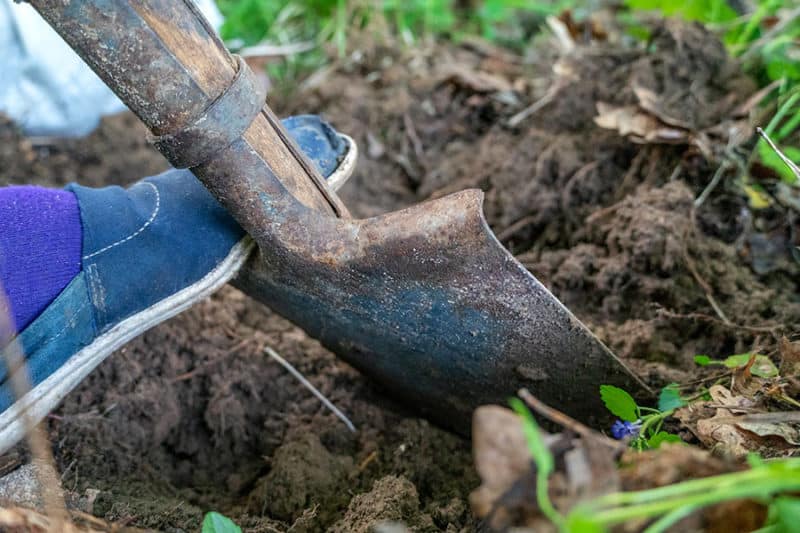
If you’ve experienced a problem with this bug in a particular garden area, don’t forget to carefully clear the bed of any remaining taproots. Don’t leave behind any plant material that may be hosting hidden pests.
Some gardeners believe that adding phosphorite along the base of plants has the potential to deter females from laying their eggs.
The Bottom Line
Carrot rust flies are a pain, but they don’t have to be a death sentence for your crops. A little prevention goes a long way, but if that fails, use the tips above to get rid of the little bugs.

